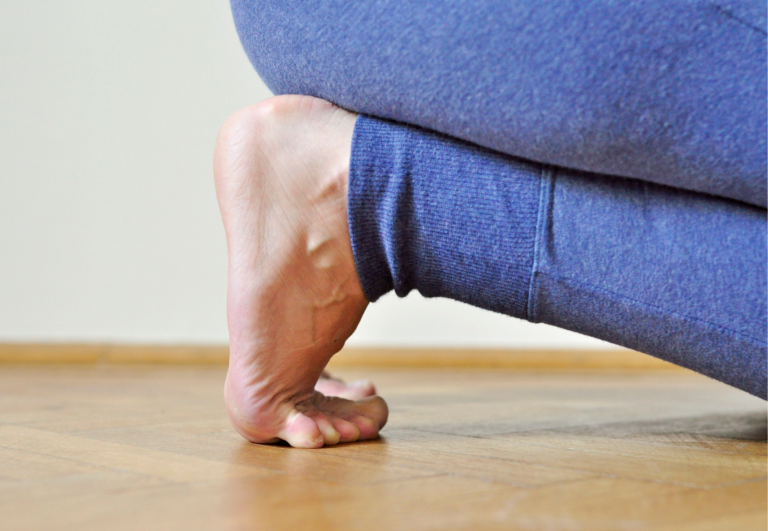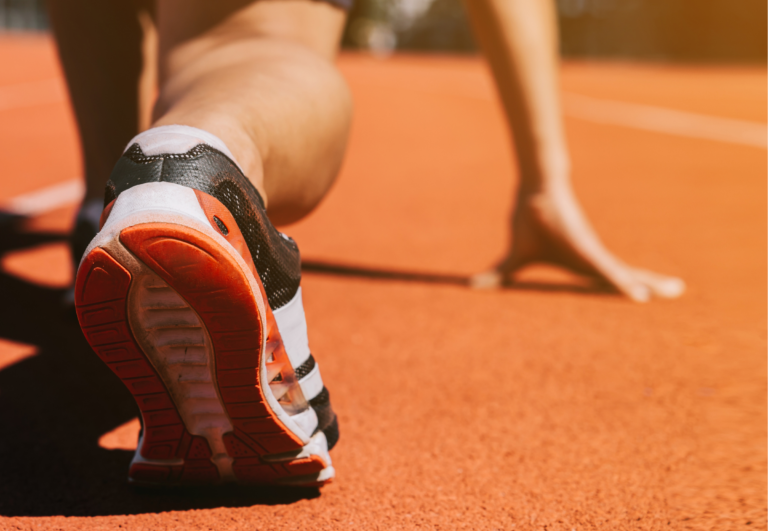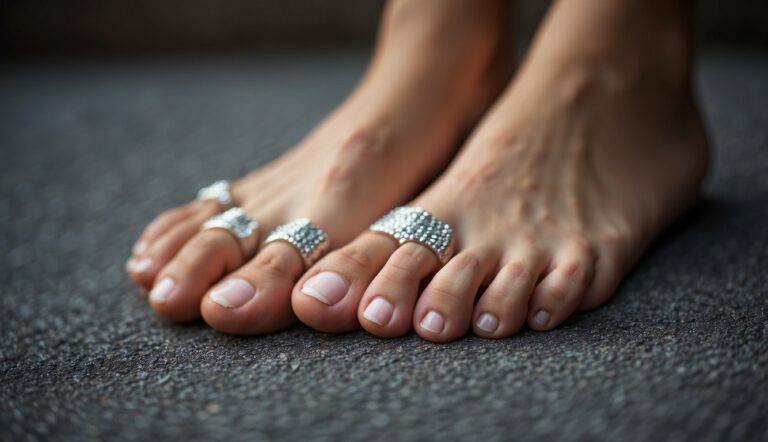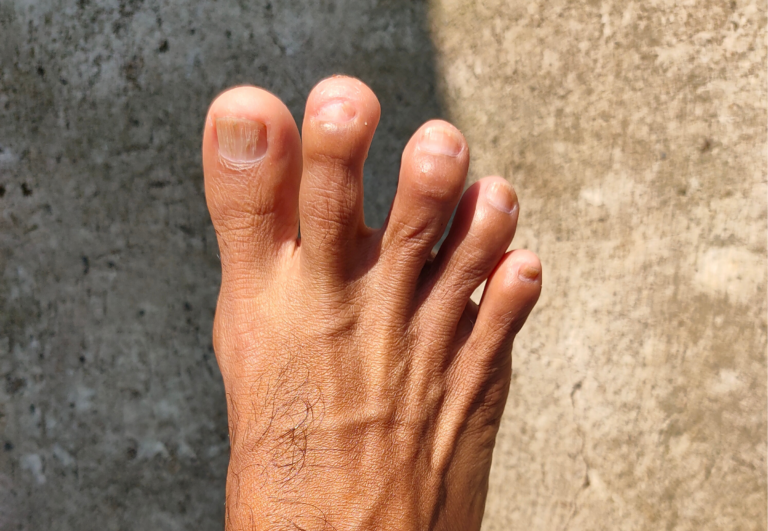Toe Spacer Techniques for Improved Circulation: Optimal Methods for Foot Health
Toe spacers are a simple yet effective tool that I’ve found beneficial for promoting better foot health and improved circulation. When toes are not correctly aligned, due to tight shoes or standing for long periods, circulation can be compromised. By separating the toes, these spacers alleviate constriction, allowing for better blood flow throughout the feet. This is especially important for those experiencing discomfort or pain from foot conditions that disrupt natural toe alignment.
Incorporating toe spacers into your daily routine can be a game-changer. They gently stretch the muscles and ligaments of the toes, fostering proper alignment and potentially offering relief from foot pain. Comfort is key when using toe spacers, and it’s vital to select a size that fits well without causing irritation. Regular use of toe spacers can contribute significantly to maintaining foot health and comfort, making them a valuable addition to anyone’s foot care practices.
Toe Spacer Techniques for Improved Circulation
Improving circulation in the feet using toe spacers involves a combination of proper use and complementary techniques. Here’s a step-by-step guide on how to use toe spacers for enhanced circulation:
- Select Suitable Toe Spacers: Choose toe spacers that are comfortable and fit well. They should provide a gentle stretch without causing any pain or discomfort.
- Proper Insertion: Place the toe spacers between each toe, ensuring they are properly seated. They should spread your toes apart slightly, which can help to reduce compression and allow for better blood flow.
- Gradual Introduction: If you’re new to toe spacers, start by wearing them for short periods to allow your feet to adjust. Gradually increase the time you wear them as your feet become more accustomed.
- Perform Foot Movements: While wearing toe spacers, wiggle your toes and perform ankle rotations to encourage circulation throughout the feet.
- Combine with Elevation: Elevate your feet while wearing toe spacers to promote venous return and enhance overall circulation.
- Use Toe Spacers During Activity: Consider wearing toe spacers during activities such as walking or yoga. Movement helps to pump blood through the feet and the rest of the body, which can be beneficial for circulation.
- Incorporate Massage: Massaging your feet with or without toe spacers can help to stimulate blood flow and reduce tension in the foot muscles. Use your hands or a foot roller to gently massage the soles and tops of your feet.
- Stay Hydrated: Proper hydration is important for maintaining good circulation. Drink plenty of water throughout the day to help support your vascular system.
- Monitor Your Progress: Pay attention to any changes in your feet, such as reduced swelling or a feeling of warmth, which may indicate improved circulation.
- Consult a Professional if Needed: If you have a medical condition affecting circulation or if you’re unsure about using toe spacers, consult with a healthcare professional for personalized advice.
By following these steps and using toe spacers as part of a regular foot care routine, you can help improve circulation in your feet. Improved circulation can lead to a reduction in foot pain and stiffness and promote overall foot health.
Toe Spacer Overview

In my experience helping people improve their foot health, toe spacers are an effective way to promote better circulation and alignment. Depending on the type and material, they can relieve various foot ailments.
Types and Materials
Toe spacers come in different materials, but silicone and gel toe separators are the most popular due to their comfort and flexibility. Silicone toe spacers are durable, hypoallergenic, and can be worn comfortably throughout the day. Gel toe separators are softer and often infused with moisturizing oils to provide additional benefits for the skin.
Benefits for Toe and Foot Alignment
The primary benefit of toe spacers is their ability to assist in the realignment of toes, leading to improved balance and posture. By separating the toes, these devices alleviate pressure on bunions, corns, calluses, and hammertoes. Consistent use can also strengthen the intrinsic foot muscles, supporting better foot structure and function.
Toe Spacer Selection for Different Foot Conditions
Choosing the right toe spacer depends on specific foot conditions and individual needs. For example, Correct Toes are a type of toe spacer designed for wide splay and can accommodate various ailments. Here’s a simple guide for selection:
- Hammertoes and Overlapping Toes: Choose spacers with a design that provides individual toe separation.
- Bunions: Look for spacers that apply gentle pressure to align the big toe.
- Corns and Calluses: Soft gel spacers that cushion and separate can help alleviate friction.
When selecting toe spacers, it’s best to consider your personal comfort and the specific advice of a foot care specialist.
Proper Use of Toe Spacers
Toe spacers can enhance circulation and provide pain relief when used correctly. They assist in maintaining proper toe alignment, which is critical for foot health and stability.
Insertion Techniques
To ensure correct fitting, start with clean, dry feet. Gently slide the toe spacers between each toe, taking care not to force them into place. They should sit comfortably without causing significant discomfort. For products like Correct Toes toe spacers, make sure they match the shape and size of your feet to provide stability and balance without undue pressure.
Duration and Frequency of Use
Begin by wearing toe spacers for short periods, such as 10-15 minutes, and gradually increase the duration as your feet adjust. Individual needs vary, but consistent daily use can contribute to pain relief and improved circulation. Aim for wearing them several times a week, striking a balance between benefit and comfort. Remember that overuse can lead to discomfort or instability, so listen to your body’s signals.
Exercises and Stretching
Incorporating toe spacer exercises into a workout routine can significantly enhance foot strength, improve mobility, and ensure proper toe alignment. I’ve found that these exercises typically focus on strengthening and stretching which contributes to better overall foot health.
Strengthening Exercises
Using toe spacers, you can effectively enhance the strength of your foot muscles. Begin with:
- Toe Presses: Place the spacers between your toes and press them downwards, targeting the muscles of your big toe and improving overall stability.
- Toe Squeezes: With the spacers in place, try squeezing your toes together and then release. Repeat this action to help in reinforcing strength and alignment.
Stretching for Improved Mobility
Stretching exercises with toe spacers can increase the range of motion and provide better mobility. I consistently perform:
- Big Toe Stretches: Gently pull your big toe away from the others while wearing toe spacers. Hold this position for a few seconds, then release.
- Flex and Point: Point your toes forward and then flex them back towards you. This helps in loosening the toe joints and maintaining flexibility.
Integration With Footwear
Integrating toe spacers with your footwear is crucial for improved circulation and comfort. The right choice in shoes and minor adjustments can make all the difference.
Choosing the Right Shoes
When selecting shoes to wear with toe spacers, I consider wide toe box designs as a top priority. These shoes offer ample space for toes to spread naturally, which is essential for the effectiveness of toe spacers. Here are some tips:
- Barefoot shoes: These often have a wide toe box, mirroring the foot’s natural shape.
- Minimalist footwear: Similar to barefoot shoes, aiming for less cushioning can provide a more natural foot position.
- Avoid high heels: High heels can cramp the toes and counteract the benefits of toe spacers. For fashion’s sake, if heels are a must, I opt for the lowest height possible.
- Orthotics: If prescribed, orthotics should be compatible with toe spacers for maximum benefit.
Alterations for Enhanced Comfort
For greater comfort, sometimes shoes need adjustments. Here’s what I find effective:
- Padding: Add extra cushioning in areas where shoes might rub against the spacers or foot.
- Lacing techniques: Adjust lacing to alleviate pressure points across the top of the foot.
- Stretching tools: Use these to widen the toe box area of existing shoes slightly, if they’re a tad snug.
Health Benefits and Recovery
Toe spacers are more than just a tool for comfort; they’re a key element in managing foot health and enhancing recovery. Through proper alignment, they aid in reducing foot pain and improving circulation.
Circulation and Blood Flow
I’ve observed toe spacers contributing positively to circulation and blood flow in the feet. This is crucial because improved blood flow ensures nutrients and oxygen reach the tissues, supporting natural healing processes. For people with diabetes, who often have circulation issues, toe spacers could be particularly beneficial. They help to distribute pressure evenly throughout the foot, which in turn can reduce the risk of complications that arise from poor circulation.
Improved Circulation Benefits:
- Nutrient and Oxygen Delivery: Enhances overall foot health.
- Even Pressure Distribution: Minimizes stress on any one area of the foot.
Injury Prevention and Recovery
Frequent use of toe spacers may also play a part in preventing injuries like plantar fasciitis, a common ailment that causes heel pain. The spacers aid in maintaining proper toe alignment, which can alleviate undue strain on the foot’s arch. For runners or those involved in athletic activities, this means better support, reduced inflammation, and assisting the body’s natural injury recovery process.
Recovery and Prevention Highlights:
- Alleviates Plantar Fasciitis: By reducing strain on the foot’s arch.
- Reduces Inflammation: A key factor in speeding up recovery time.
- Supports Athletic Performance: Proper alignment enhances stability and energy transfer.





